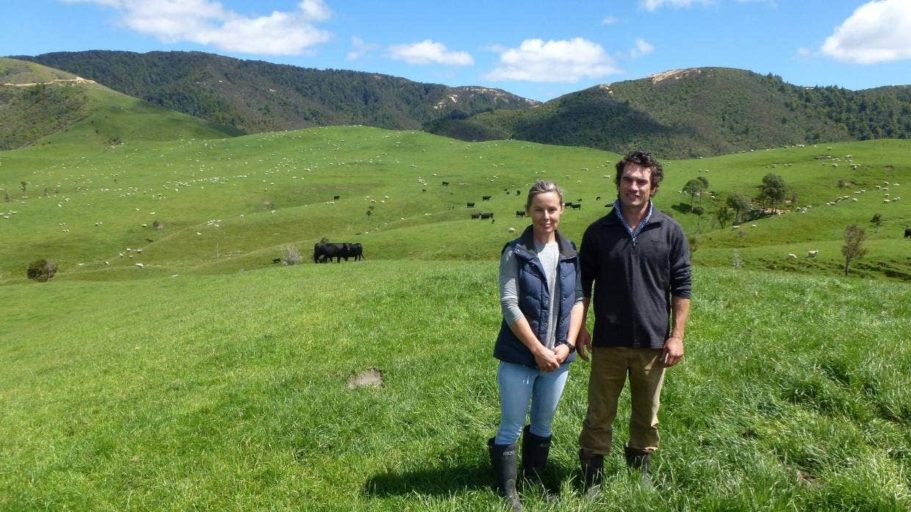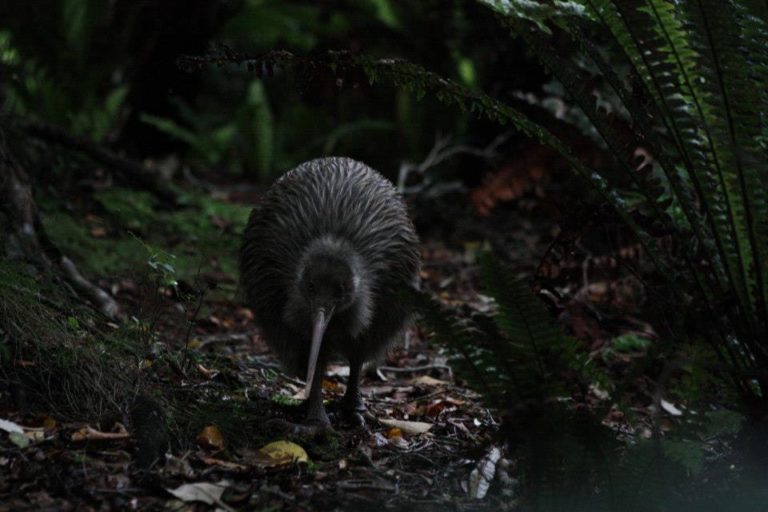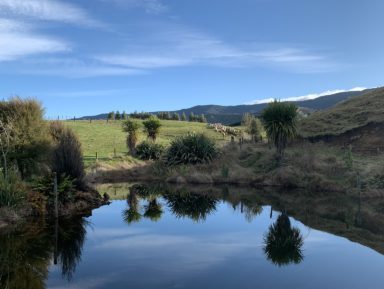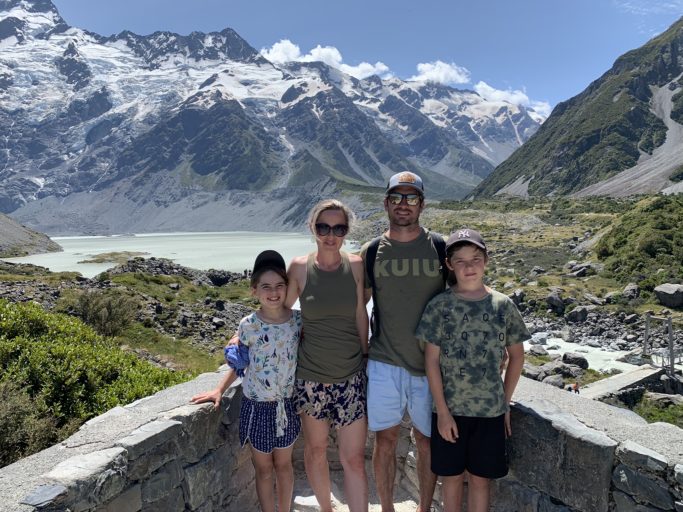Dan Herries manages Taramoa Station in Puketitiri, Hawke’s Bay, a 564 hectare sheep and beef farm which lies between two significant and beautiful blocks of forest – an 800-year-old, unmilled podocarp forest known as Ball’s Clearing Scenic Reserve and Kaweka Forest Park where once-burnt faces have now regenerated with manuka and softwoods and original red and mountain beech grows in the gullies and on the tops. The stunning landscape and rich birdlife has a deep influence on his farming philosophy.
“Taramoa has a 10 kilometre Forest Park boundary,” Dan explains. “It’s the only land between the two reserves. There are kiwi, kaka, kakariki, robins and bats at Ball’s Clearing and on the farm, as well as the usual tomtits, tui, bellbirds etc. We have a holistic philosophy of farming the whole ecosystem,” he adds. “We open our eyes to what we’ve got and work out what we need to do so they thrive.”

The native wildlife in the area is significant and Dan, wife Billie and their family wanted to do something to enhance and protect what they have.
“There’s a trapping network on our 10 kilometre forest boundary to protect kiwi,” Dan says. “We coordinate with ‘Save Our Kaweka Kiwi’, which works with the Department of Conservation in the Hawke’s Bay. We’re part of the volunteer team doing health checks and releasing birds. We bring back 1 kilogram juvenile kiwi that have been raised at Opouahi Kiwi Creche. [Once kiwi chicks reach 1 kilogram they’re big enough to defend themselves against predators].

The boundary trapping programme is setup according to DOC best practice with DOC 200 and DOC 250 traps set up at 150 metre intervals and checked by volunteers at least once every month. Traps usually get checked more often though as Dan checks them when he’s driving around the farm. Catches are logged on TrapNZ.
Dan also carries out his own trapping and restoration work on Taramoa Station itself.
“The wetlands and waterways on the farm are all fenced,” he says. “We started about 10 years ago. The water comes out of the forest park pristine and ours is the first land it encounters. We want it to leave here pristine as well. You can drink from any waterway on the farm!”
Dan also plants for erosion control and 100 hectares of farmland has been retired.
When it comes to the trapping on the rest of the farm, Dan ‘does his own thing’, rather than strictly adhering to DOC best practice.
“When you’re living in the environment, you have the opportunity to be more flexible,” he says. “The traps within the farm are placed where there’s key habitat. Sometimes I’ll have 5 traps within 10 metres of each other, because they keep catching things. There’s a scattering of different traps at different locations. Some are checked every day as I’m driving past.”
For any farmers wanting to make a difference, Dan recommends they begin by trapping around their dog kennels.

“I’ve got all sorts of traps around the dog kennels. It’s the best place to trap. Rats and mice eat the dog biscuits that slip through the cracks in the kennels and ferrets and stoats come to eat the rats and mice. I catch something every day. It never fails!”
Dan also has DOC 200, Timms and Possum Master traps around the rest of the farm.
“The Possum Master mostly catches cats, but also ferrets and stoats. There are no close neighbours and none of our neighbours have cats,” he explains. “We are a 1-hour drive from any built-up area, so the cats we trap are all feral.”
DOC 200s are used to trap around a large 1 hectare lake on the station, where mallard, grey ducks and pukeko nest. An impressive 40,000 native plants have also been planted.
“I’ve only done 20,000 of them myself,” says Dan. “The aim is to create a corridor across the farm from Balls Clearing to Kaweka Forest Park.”
Dan was brought up in Puketitiri and returned with his family to manage the farm about 6 years ago. In between times, he and wife Billie worked for the Department of Conservation.

“I worked for DOC for 10 years, all around the country – Kaweka Forest Park, Fiordland, the Chatham Islands. My main area was managing invasive species. I learnt a lot about predator control as team leader for Boundary Stream Mainland Island,” he says. “While we were on the Chathams, friends managing the property left, so it was an opportunity to move into farm management.”
Dan says his work with DOC gave him the opportunity to know where to start with predator control on the station.
“It’s not complicated. I knew what needed to be done and what pest species and what birds we had so I just got stuck in. Hawke’s Bay Regional Council supplied the first traps and we did the work. Now we’ve got about 200 traps in total on the farm. Half of those are on the boundary and the volunteers help immensely with checking those.”
Not surprisingly, Dan and Billie Herries were well-deserving winners in several categories at the 2020 East Coast Ballance Farm Environment Awards, but for this farming family, taking care of the special environment they live in, is just the way they do things.
“We often think that if we do all this stuff, we’ll lose productivity. However, the combination of these things all adds up, meaning our financial performance has increased dramatically.”
For example, fencing off waterways not only creates a riparian corridor for native species, it also reduces stock losses from drowning. Creating robust shelter belts of native plants has the bonus of boosting young animal survival rates.
“It’s pretty daunting at first and we’ve made plenty of mistakes along the way – we’ve learnt by doing. But it’s been worth it – it’s amazing now and gives us a great sense of satisfaction. A good approach is to pick the highest priority area to retire and just do that one. We didn’t do a whole farm plan to start with – we just did it year-by-year. It’s not so daunting now that we’ve broken it down.”
“It’s the right thing to do,” says Dan, “And as farmers we need to promote the good stuff that’s happening.”

